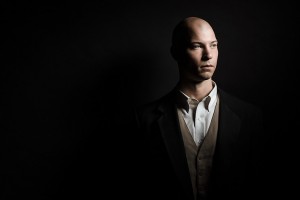 John Nichols III believes that a work of art is an expression of something that cannot be expressed in any other way. Two of his favorite statements concerning the nature of art came from the authors Cyril Connolly and John Cage. Connolly wrote, “Art is the conscious apprehension of the unconscious ecstasy of all created things,” and Cage wrote, “Our intention is to affirm this life, not to bring order out of chaos, nor to suggest improvements in creation, but simply to wake up to the very life we’re living.” Nichols is often drawn to incidental qualities or minor accidents that seem to go unnoticed in our everyday lives. His work signifies the greater and unknown influence of these often overlooked events. In addition, his compositions are meant to effuse the various qualities and degrees of material and immaterial being, and to express the salvation of individuality through the renunciation of egoism. His recent stereophonic works are created through a complex cycle of recording sessions, processing techniques, sound-design, observing and notating the environment’s effect on the composition, arranging and assembly, revisions, and refinement. Nichols’s intent is to make something musical, expressive, creative, and intriguing, while avoiding overt narrative connections.
John Nichols III believes that a work of art is an expression of something that cannot be expressed in any other way. Two of his favorite statements concerning the nature of art came from the authors Cyril Connolly and John Cage. Connolly wrote, “Art is the conscious apprehension of the unconscious ecstasy of all created things,” and Cage wrote, “Our intention is to affirm this life, not to bring order out of chaos, nor to suggest improvements in creation, but simply to wake up to the very life we’re living.” Nichols is often drawn to incidental qualities or minor accidents that seem to go unnoticed in our everyday lives. His work signifies the greater and unknown influence of these often overlooked events. In addition, his compositions are meant to effuse the various qualities and degrees of material and immaterial being, and to express the salvation of individuality through the renunciation of egoism. His recent stereophonic works are created through a complex cycle of recording sessions, processing techniques, sound-design, observing and notating the environment’s effect on the composition, arranging and assembly, revisions, and refinement. Nichols’s intent is to make something musical, expressive, creative, and intriguing, while avoiding overt narrative connections.
Completed in 2013, Gates (Kedesh-naphtali) is a stereophonic composition that was partly inspired the Pleiades constellation and contains a musical mapping of an image of the constellation. One can hear this depiction in the “wood block” timbres. This representation of Pleiades relates to a passage from Ignatius Loyola’s autobiography, St. Ignatius’ Own Story as Told to Luiz Gonzalez de Camara (1555). It was his [Ignatius’] greatest consolation to gaze upon the heavens and stars, which he often did, and for long stretches at a time, because when doing so he felt within himself a powerful urge to be serving our Lord. The idea to overlay, or “etch” sustained sonorities with a variety of successive ephemeral noises was partly inspired by Luigi Russolo’s use of the term “sound” to describe an audio signal with periodicity and “noise” as the lack thereof. Although some of the “noises” in this composition may not be entirely in accordance with his definition, the contrast between the two ideas is apparent. In addition to this relationship, the composition generally balances active and static components between the first and second half.